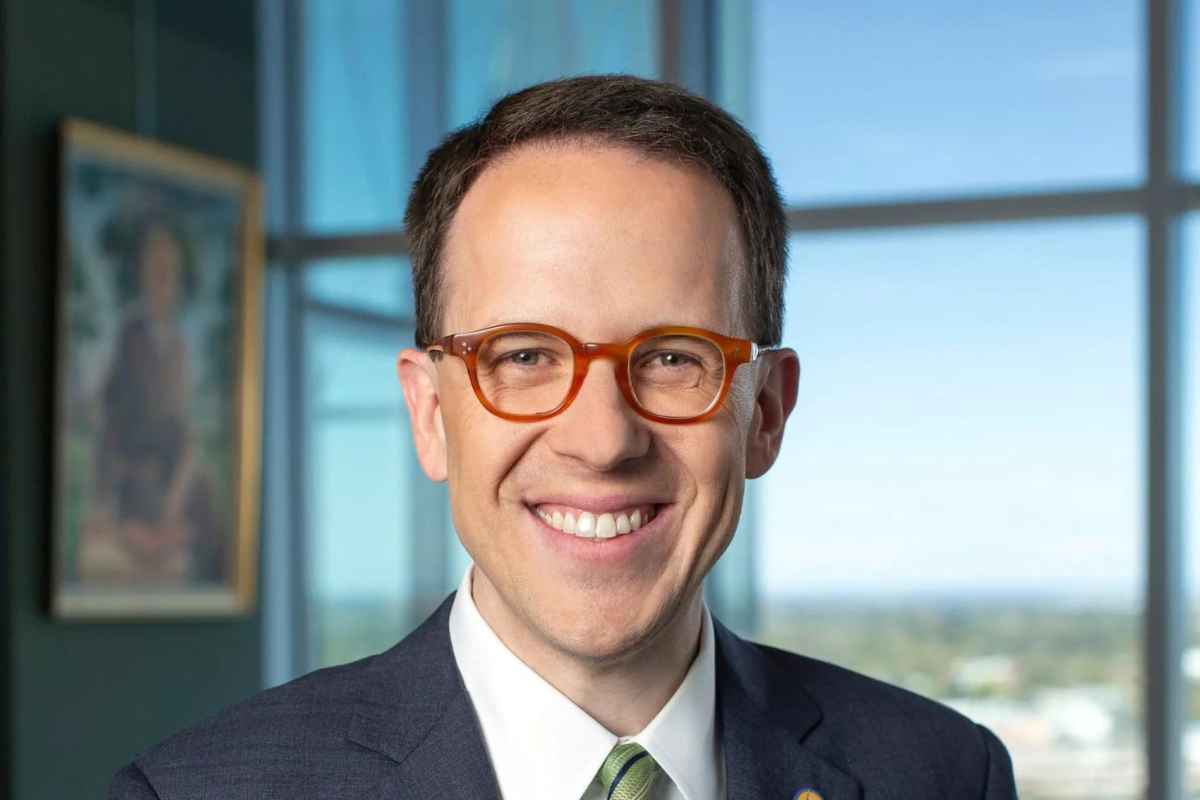Revitalizing the River: Mayor Bynum’s Vision for a Dynamic Tulsa Riverfront

Throughout his time on the Tulsa City Council and as Mayor, G.T. Bynum has been a passionate advocate for the development of Tulsa’s Arkansas River Corridor. A visit to Pittsburgh sparked his vision to turn Tulsa’s riverfront into a vibrant economic hub, drawing inspiration from cities like Pittsburgh and San Antonio. Under his leadership, projects like Zink Lake are already bringing new life to the area.
In this month’s Trustee Feature, Mayor Bynum highlights how Tulsa can continue to learn from other cities, while crafting a unique riverfront that boosts our economy, attracts top talent and enhances our quality of life.
You’ve spoken in the past about how a visit to Pittsburgh to see their investments in river assets inspired your commitment to finally find a pathway for funding investments in Tulsa’s Arkansas River Corridor. When you look at how other cities nationally and internationally have invested in their rivers as anchor economic development assets, what ideas do you think Tulsa can steal from them as we think about “what comes next”? What do you think can be unique about how Tulsa pursues further economic development along the Arkansas River?
When you look at cities like Pittsburgh, and even others closer to us – cities like San Antonio – waterfronts are proven economic development assets. We have known for years that Tulsa had untapped potential when it came to riverfront development. Riverfront development in Pittsburgh is boosting direct economic impact while helping create more jobs. Zink Lake will have similar water activities to those offered in Pittsburg, and we’re already seeing the resurgence of interest in the area and in spots along Route 66 on the lake’s north side.
Equally important, though, is the message investments like this send to business leaders looking to expand in or relocate to Tulsa. In recent years, I’ve been told by so many CEOs that the reason they are looking to invest in Tulsa is because our community is investing in itself. It makes it a smart move for them when they see so much positive local momentum.
Now more than ever, we know that people are highly mobile and can work from anywhere – and that these decisions greatly influence how businesses think about how and where they grow. How do assets like Zink Lake and broader improvements along the river corridor play into the City’s strategy to attract and retain talent and ensure our economy is successful?
When I first became mayor, our economic development team under Kathy Taylor and Kian Kamas did a lot of work to identify where our strategic advantage resided. What they found was that we are a city with a quality of life level that you would usually have to go to much bigger cities to find. Think of things like the Gathering Place, the BOK Center, or Gilcrease Museum. Yet we have the cost of living of a city that is smaller than those big cities. So we have this sweet spot between high quality of life and low cost of living that gives us a huge advantage once we get recruits on the ground here. This has contributed to the tremendous economic growth we’ve experienced in the last decade, and is why remote work has become so successful in Tulsa. But we will only retain that advantage if we stay disciplined by both investing in our quality of life and doing those things that keep our cost of living comparatively low.
You led efforts that resulted in Tulsa passing $75 million to support housing development through the Improve Our Tulsa 3 program. What opportunities do you see for Tulsa to leverage future development along the river corridor to spur housing development?
The hottest development ticket in town is near the lakes we are building. Zink Lake is relatively locked up on the East bank with the Gathering Place and some of our most beautiful historic neighborhoods. But I think there is tremendous potential on the West Bank, both on land the City owns and plans to vacate as well as a concrete plant that will undoubtedly be developed to a higher and better use. My hope is that the City ties development incentives to the production of more housing units to support the tremendous demand for housing we see in Tulsa.
The South Tulsa Jenks Lake offers tremendous development potential on both sides, and I am confident will be a development magnet over the next decade.
What is your favorite way to experience the Arkansas River?
For the rest of my life, watching families enjoy Zink Lake will be one of the best things I get to do. I’ve worked on this project for 16 years, and it will be so rewarding to see the vision realized by my neighbors getting to enjoy it. I’ve heard stories all my life from people who would be at LaFortune Park after it opened and saw this old man sitting on a bench and just beaming while they enjoyed it. Only later did they realize that old man was my great-grandad, Joe LaFortune, who built the park. So in years to come I will be that joyful, anonymous old guy on the bench in River Parks or on the Williams Crossing Bridge.